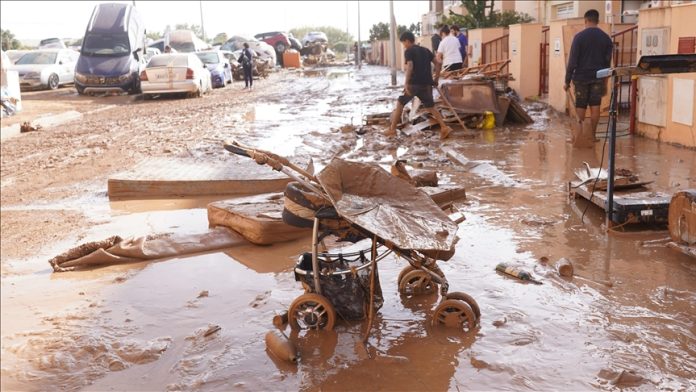The devastating storms and floods that swept across Europe last year affected 413,000 people, while fossil fuel pollution forced the continent into its hottest year on record, according to a new report.
Europe’s devastating floods
According to the European State of the Climate report, 2024 saw dramatic scenes of cars piling up in flooded streets and bridges being destroyed by raging torrents across the continent, with “high” floods covering 30 per cent of Europe’s river network and 12 per cent exceeding the “severe” flood threshold.
Two of the most devastating examples were the floods that hit central Europe in September and eastern Spain in October, killing more than 250 people out of the 335 recorded on the continent in 2024.
Previous studies have shown that natural disasters have intensified and become more likely due to global warming, which allows clouds to drop more rain on the ground.
Director General of the World Meteorological Organisation (WMO),Celeste Saulo said that “every extra fraction of a degree” of temperature rise matters, but societies must also adapt to a hotter world.
“We are making progress, but we need to move further and faster,” the WMO director general said. “And we need to get our act together.”
The report, which was published on Tuesday by the EU’s Copernicus climate change service and the WMO, said the number of days with “severe,” “very severe” and “extreme heat stress” was the second highest ever recorded.
In July 2024, Southeast Europe experienced its longest heat wave on record, scorching more than half of the region for 13 consecutive days. At the same time, the intense heat across the continent led to devastating wildfires that affected 42,000 people, the report said. About a quarter of the area burned in Europe last year was due to devastating wildfires in Portugal in September, which burned about 110,000 hectares in one week.
Friederike Otto, a climate scientist at Imperial College London and co-director of World Weather Attribution, emphasises that the report “lays bare the pain that people in Europe are already suffering from extreme weather” with global warming 1.3 degrees above pre-industrial levels.
Glaciers lost more ice than ever before
The report’s authors emphasised the “unusual” contrast between western and eastern Europe, where it is typically rainy and cloudy in the west and warm and sunny in the east. River flows in western countries tend to be above average, while those in eastern countries are below average. The report said that in a few months last year, water levels in the Thames in the UK and the Loire in France reached their highest levels in 33 years.
Glaciers in all regions lost more ice than ever before, according to the report. The authors also noted high temperatures north of the Arctic Circle and the highest sea surface temperatures recorded in the Mediterranean Sea.
Impact on ecosystem
Froila Palmeiro, a climatologist at the Euro-Mediterranean Centre for Climate Change, says the extremes “not only have a direct impact on their ecosystems, but also play a role in weather patterns affecting the whole of Europe.”
Europe is warming twice as fast as the global average, but the pollution associated with warming the planet is declining faster than other major economies. The EU plans to achieve net zero greenhouse gas emissions by 2050 and is also expected to announce a target of a net 90 per cent reduction in emissions by 2040 later this year.
Thomas Gelin, an environmental campaigner on climate change, said the report showed that politicians had failed to hold fossil fuel companies to account and stop the expansion of their polluting businesses. “The only regions of Europe that are not scorched to the ground are washed away by floods,” he said. “The EU must urgently update its climate targets to reflect scientific reality and stop new fossil fuel projects as a first step towards complete divestment.”
